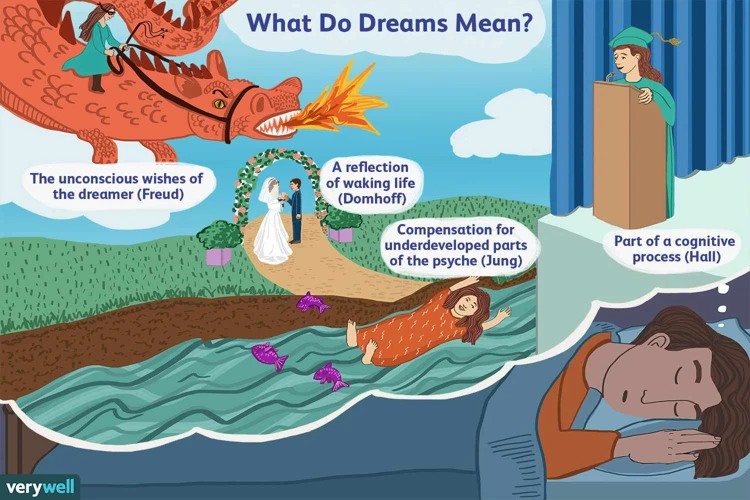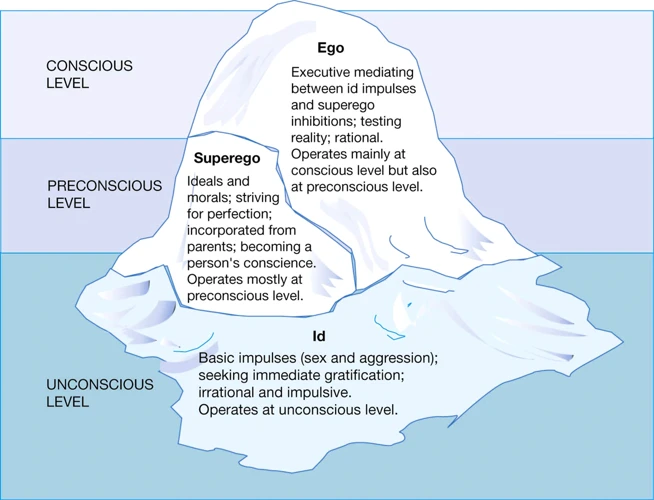Dreams have long been a source of intrigue and mystery for both scientists and ordinary individuals. People have always wondered about the hidden meanings behind their dreams and what they might reveal about their subconscious minds. When it comes to understanding dream analysis, few names stand out like that of Sigmund Freud. This article delves into Freud’s groundbreaking theories on unlocking the meaning of dreams. Through exploring concepts such as the unconscious mind, manifest and latent content, symbolism, as well as the interpretation of common dream symbols, sexual and Oedipal symbols, and dreams related to trauma and anxiety, we hope to shed light on the fascinating world of dream analysis according to Freud. So buckle up and prepare to embark on a journey deep into the realms of the mind as we unravel the enigmatic nature of dreams.
The Basics of Freudian Dream Analysis

1. The Unconscious Mind and Dreams: According to Freud, dreams are a pathway into the unconscious mind. He believed that our deepest desires, fears, and emotions are repressed and hidden within our unconscious, and dreams provide a means for these suppressed thoughts to surface. By analyzing dreams, Freud aimed to uncover the unconscious motives and conflicts that affect our daily lives.
2. Manifest and Latent Content: Freud differentiated between the manifest content, which is the literal storyline of the dream, and the latent content, which is the hidden or symbolic meaning behind the dream. He argued that the manifest content is influenced by the censorship of the conscious mind, while the latent content represents the true desires and emotions of the dreamer. Understanding and interpreting the latent content is crucial for unraveling the meaning of dreams.
3. Symbolism in Dreams: Freud believed that dreams are filled with symbols that represent unconscious thoughts and desires. These symbols can be personal and unique to each individual or can have universal meanings. Analyzing the symbols in a dream can provide insight into the underlying meaning and significance of the dream. For example, dreams about falling may symbolize a loss of control or fear of failure, while dreams about flying could represent freedom or escape.
1. The Unconscious Mind and Dreams
In Freudian dream analysis, the concept of the unconscious mind plays a central role. Freud believed that our unconscious mind holds repressed thoughts, desires, and memories that are outside of our conscious awareness. He argued that dreams provide a gateway into this hidden realm of the mind, allowing these unconscious contents to emerge. The unconscious mind can reveal conflicts, desires, and emotions that we may not be fully aware of in our waking lives. By examining the symbols, images, and narratives in our dreams, we can gain insights into our deepest fears, wishes, and conflicts. Understanding the workings of the unconscious mind is essential in unlocking the meaning behind our dreams and gaining a deeper understanding of ourselves.
So how can we access the contents of the unconscious mind? According to Freud, dreams are one of the primary ways in which the unconscious communicates with the conscious mind. Through dream analysis, we can unravel the symbolism and hidden messages in our dreams, giving us an opportunity to gain self-awareness and insight. Whether it’s a dream about cocaine, having a child, or a car falling off a cliff, each dream holds valuable clues that lead us into the depths of our unconscious.
2. Manifest and Latent Content
Manifest and latent content are two key concepts in Freudian dream analysis. Manifest content refers to the surface-level storyline of a dream, the events and images that are experienced during sleep. This is what we consciously remember when we wake up. However, according to Freud, the true meaning of a dream lies in its latent content. The latent content represents the hidden or symbolic messages and desires that are encoded within the manifest content. It requires a deeper analysis to uncover the underlying meaning. For example, a dream about a car falling off a cliff may seem like a simple nightmare on the surface (manifest content), but through interpretation, it could symbolize a fear of losing control or a sense of impending danger in one’s waking life. Understanding the distinction between manifest and latent content is crucial in deciphering the true significance of a dream. To further explore how dreams can reveal latent content, you can read our article on dream car falling off a cliff.
3. Symbolism in Dreams
Symbolism in dreams is a key aspect of Freudian dream analysis. Freud believed that symbols in dreams represent hidden or repressed thoughts and desires. These symbols can vary in meaning depending on the individual’s personal experiences and cultural background. For instance, a snake in a dream may symbolize temptation or sexuality, while water could represent emotions or the unconscious mind. Freud’s interpretation of dream symbols often involved exploring the sexual undertones they may have. For example, dreaming of a snake could indicate repressed sexual desires, according to Freud. Understanding the symbolism in dreams can provide profound insights into the unconscious mind and help uncover deeper meanings behind various dream scenarios and experiences.
Common Dream Symbols and Their Interpretations

1. Falling: Falling is a common dream symbol that Freud believed represents a loss of control or a fear of failure. It can signify a sense of vulnerability or insecurity in waking life. The sensation of falling in a dream may be an indication of anxieties or insecurities that need to be addressed.
2. Flying: Dreaming of flying often symbolizes freedom, liberation, or a desire for escape. Freud interpreted this dream symbol as a manifestation of unconscious desires for power, independence, and the ability to transcend limitations. Flying dreams can evoke feelings of confidence, exhilaration, and a sense of being in control.
3. Teeth Falling Out: Dreams of teeth falling out are frequently recurring and often associated with feelings of anxiety or insecurity. Freud interpreted this symbol as representing castration anxiety or fear of losing potency. However, other interpretations suggest it may relate to self-image or concerns about aging and appearance.
4. Being Chased: Being chased in a dream can reflect feelings of being pursued or overwhelmed by problems in one’s waking life. Freud saw this as a manifestation of unresolved internal conflicts or repressed emotions. It may represent the attempt to flee from unresolved issues rather than confronting them directly.
For a better understanding of dream interpretation, let’s explore the intriguing concepts of sexual and Oedipal symbols within dreams.
1. Falling
1. Falling: One common dream symbol that Freud analyzed is the act of falling. Falling in dreams can often reflect a sense of insecurity, fear, or loss of control. Freud interpreted the act of falling as a metaphor for a loss of sexual pleasure or the fear of castration in men. He believed that falling dreams could stem from repressed sexual desires or anxieties related to one’s sexuality. Additionally, falling dreams may also reflect a general feeling of failure, a lack of stability, or a fear of losing one’s status or position in life. It is important to consider the context and personal experiences of the dreamer when interpreting the meaning of falling dreams. For example, falling from a great height may suggest a fear of failure or a feeling of being overwhelmed, while a dream about falling from a bridge could represent a fear of taking risks or making important life decisions. Understanding the specific details and emotions associated with the falling dream can provide further insights into its meaning.
2. Flying
Flying is a common dream symbol that has fascinated dream analysts for years. According to Freud, flying represents a sense of freedom and liberation. It often signifies a desire to escape from the constraints and limitations of daily life. When we dream of flying, it may indicate a longing for independence, adventure, or a need for a different perspective on our current circumstances. This dream symbol can be linked to feelings of empowerment, confidence, or the pursuit of goals. However, it is important to note that the specific interpretation of flying in dreams can vary depending on the individual and their personal experiences. Understanding the context and emotions surrounding the dream can provide deeper insight into its meaning and relevance to the dreamer’s life.
3. Teeth Falling Out
3. Teeth Falling Out: One common dream symbol analyzed by Freud is the experience of teeth falling out. According to Freudian dream analysis, this dream often represents feelings of powerlessness or a loss of control in waking life. It may also be associated with issues related to self-image or concerns about appearance. Freud believed that teeth falling out dreams could be linked to repressed aggression or a fear of castration. However, it’s important to note that dream interpretation is highly subjective, and the specific meaning of this symbol can vary for each individual. To learn more about interpreting dreams related to teeth falling out, you can read our article on “Dreaming About Having a Child” and gain further insights into the possible interpretations of this fascinating dream symbol.
4. Being Chased
Being chased is a common dream scenario that can hold significant meaning in Freudian dream analysis. Freud interpreted being chased in dreams as a symbol of running away from repressed desires or unresolved conflicts. It is often associated with feelings of anxiety, fear, and avoidance. The pursuer in the dream may represent an aspect of the dreamer’s own personality or a situation they are trying to avoid. For instance, being chased in a dream could reflect feelings of guilt or the need to confront a difficult decision. It is essential to explore the specific details and emotions associated with being chased in order to decode its interpretation fully. If you’re interested in learning more about other dream symbols and their meanings, you can check our article on dreaming of cocaine.
Sexual and Oedipal Symbols in Dreams

1. The Oedipus Complex: One of Freud’s most notable theories is the Oedipus complex, which suggests that during childhood, individuals experience unconscious sexual desires towards their opposite-sex parent and view the same-sex parent as a rival. These repressed desires and conflicts often manifest in dreams, presenting themselves through various symbols and scenarios. Freud believed that analyzing these dream symbols could provide insight into unresolved Oedipal conflicts and their impact on one’s psychological development.
2. Sexual Imagery in Dreams: Freud emphasized the presence of sexual symbolism in dreams, even if the dreams themselves don’t seem overtly sexual. He proposed that many seemingly unrelated symbols in dreams actually have sexual connotations. The interpretation of these symbols requires a deep understanding of the dreamer’s personal experiences and subconscious associations. By exploring symbols such as snakes, tunnels, or even seemingly innocent objects, Freud believed it was possible to uncover deeper sexual desires, conflicts, and anxieties within the dreamer’s psyche.
Subscribe to Our Newsletter
Sign up to receive the latest news and updates.
1. The Oedipus Complex
The Oedipus Complex is one of Freud’s most well-known concepts in dream analysis. It is based on the Greek myth of Oedipus, who unknowingly kills his father and marries his mother. According to Freud, the Oedipus Complex is a psychological phenomenon that occurs during a child’s development. It involves unconscious feelings of desire and rivalry towards the parent of the opposite sex. In dreams, the Oedipus Complex can manifest through various symbols and scenarios, such as dreaming about one’s parents or engaging in intimate acts with them. These dreams serve as a symbolic representation of the inner conflicts and desires that arise during the development of a child’s psychosexual stages. Understanding the Oedipus Complex can provide valuable insights into the analysis of dreams and the interpretation of their underlying meanings.
2. Sexual Imagery in Dreams
2. Sexual Imagery in Dreams:
Freud believed that sexual imagery in dreams was a common occurrence and held important symbolic meaning. He argued that dreams often served as a way for individuals to express their repressed sexual desires and fantasies. Sexual symbols in dreams can vary greatly and may include objects or activities that represent sexual themes. For example, dreams about snakes, tunnels, or swords may be interpreted as phallic symbols, representing masculine sexuality. Additionally, Freud suggested that certain dreams, such as those involving nudity or sexual encounters with unfamiliar people, could reflect unconscious desires or unresolved sexual conflicts. Understanding the sexual imagery in dreams can provide valuable insights into a person’s innermost desires and conflicts. It’s important to note that while sexual imagery is a common element in dreams, it does not necessarily have literal or explicit interpretations, but rather symbolic representations of unconscious thoughts and emotions.
Interpreting Dreams Related to Trauma and Anxiety
1. Nightmares: Dreaming of traumatic events or experiencing intense fear during sleep can be indicative of unresolved trauma or anxiety. Freud believed that nightmares provide a window into the unconscious mind’s attempt to process and deal with these distressing experiences. By exploring the symbolism and underlying emotions in nightmares, individuals can gain insight into the unresolved trauma or anxiety that may require further attention and healing.
2. Recurring Dreams: Recurring dreams are dreams that are experienced repeatedly over a period of time. Freud believed that recurring dreams are a manifestation of unresolved conflicts or repressed emotions. These dreams often reflect deep-seated fears, anxieties, or unresolved issues from the past that continue to influence the dreamer’s psyche. Understanding the hidden messages and symbols within recurring dreams can provide valuable clues to the source of trauma or anxiety and can guide individuals towards resolving these underlying issues.
3. Dream Analysis as a Therapeutic Tool: Freud viewed dream analysis as a vital aspect of psychotherapy, especially when it comes to trauma and anxiety-related dreams. Through the exploration of dream content, symbolism, and emotions, individuals can gain a deeper understanding of their inner conflicts and identify areas of their lives that require attention and healing. Dream analysis serves as a tool for unlocking the subconscious mind and can aid in the process of personal growth, healing, and finding resolution to traumatic experiences or anxiety-inducing situations.
By delving into the world of dreams related to trauma and anxiety, individuals can address unresolved issues, gain self-awareness, and ultimately take steps towards achieving emotional well-being.
1. Nightmares
1. Nightmares: Nightmares are intense and disturbing dreams that can leave individuals feeling frightened, anxious, and unsettled upon waking up. According to Freudian dream analysis, nightmares often stem from repressed fears, traumas, or unresolved conflicts within the unconscious mind. These dreams serve as a way for the mind to process and release these pent-up emotions. Nightmares can also be associated with feelings of guilt or anxiety about certain life situations. Freud believed that the interpretation of nightmares should focus on uncovering the underlying repressed fears or traumas that are being symbolically portrayed in the dream. Understanding the latent content of nightmares can provide valuable insights into the dreamer’s psychological state and aid in personal growth and healing.
2. Recurring Dreams
Recurring dreams are a common phenomenon that Freud believed held significant meaning. These dreams are characterized by their repetitive nature, often featuring the same theme, setting, or storyline. According to Freud, recurring dreams are a manifestation of unresolved conflicts or repressed emotions within the unconscious mind. They serve as a way for the mind to alert the dreamer of underlying issues that need to be addressed. By analyzing the patterns and symbols present in recurring dreams, individuals can gain insights into their unconscious thoughts and desires. For example, a recurring dream about being chased may indicate an ongoing struggle or fear that needs to be confronted. Understanding the symbolism and messages embedded within recurring dreams can offer valuable guidance in self-reflection and personal growth. To learn more about the interpretation of dreams involving substance use, take a look at our article on dreams of cocaine.
Conclusion
In conclusion, Freudian dream analysis offers a fascinating perspective into the complexities of the human mind and the hidden meanings behind our dreams. Through concepts such as the unconscious mind, manifest and latent content, and symbolism, Freud provided a framework for understanding the deeper psychological processes at play during sleep. By delving into common dream symbols and their interpretations, as well as exploring the presence of sexual and oedipal symbols in dreams, Freud unearthed the underlying desires and anxieties that shape our dreams. Additionally, the examination of dreams related to trauma and anxiety highlighted the potential therapeutic benefits of dream analysis. While Freud’s theories have garnered both praise and criticism over the years, his contributions to the field of dream analysis have undeniably left a lasting impact. Understanding the meaning of dreams according to Freud allows us to gain valuable insights into our unconscious minds and navigate the complexities of our inner selves. So, next time you find yourself questioning the meaning behind a dream, consider delving into Freudian dream analysis to unlock the intriguing symbolism within.
Frequently Asked Questions
1. Can dreams really reveal hidden desires and emotions?
According to Freudian dream analysis, dreams have the potential to uncover unconscious desires, fears, and emotions that are repressed in waking life. By examining the symbols and meanings within dreams, Freud believed one could gain insight into the unconscious mind.
2. Why is the distinction between manifest and latent content important?
The distinction between manifest and latent content is crucial in Freudian dream analysis. The manifest content refers to the literal elements of the dream, while the latent content represents the symbolic or hidden meaning. Understanding the latent content allows us to decipher the true intentions and desires behind the dream.
3. Do all dreams have symbolic meanings?
Freud believed that all dreams have symbolic meanings. While some symbols may be universal, others may have personal significance to the dreamer. Analyzing the symbolism in dreams can provide valuable insights into the subconscious mind.
4. How can I interpret my own dreams using Freudian analysis?
To interpret your own dreams using Freudian analysis, start by keeping a dream journal. Write down the details and emotions you remember from each dream. Look for symbols and recurring patterns, and associate them with your personal experiences and desires. Remember that dream interpretation is subjective and personal, so trust your own instincts.
5. Can dreams help me understand unresolved conflicts from my past?
Yes, dreams can provide a window into unresolved conflicts from one’s past. Freud believed that repressed memories and emotions can resurface in dreams, allowing individuals to confront and resolve these unresolved issues in a symbolic way.
6. Are sexual symbols common in dreams?
Sexual symbols are commonly found in dreams according to Freudian analysis. These symbols may represent repressed sexual desires or emotions, or they may have deeper psychological meanings associated with intimacy, power, or vulnerability.
7. Can recurring dreams indicate a deeper significance?
Yes, recurring dreams often have a deeper significance. Freud believed that recurring dreams are a way for the unconscious mind to draw attention to unresolved conflicts or issues that continue to affect the individual. Exploring the recurring themes and symbols in these dreams can provide valuable insights.
8. How do traumatic experiences influence dreams?
Traumatic experiences can greatly influence dreams. Trauma-related dreams, such as nightmares, may act as a way for the mind to process and cope with the emotional impact of the trauma. These dreams can be intense and vivid, reflecting the unresolved emotions and memories associated with the traumatic event.
9. Can dreams help us gain self-awareness?
Yes, dreams can help us gain self-awareness. By delving into the symbols, emotions, and patterns within our dreams, we can access hidden aspects of our psyche and gain insights into our deepest desires, fears, and conflicts. This self-awareness can lead to personal growth and understanding.
10. Can dream analysis replace therapy?
Dream analysis, including Freudian analysis, can provide valuable insights into the unconscious mind. However, it is not a substitute for therapy. If you are facing emotional or psychological challenges, seeking professional therapy is recommended for a comprehensive understanding and resolution of your issues.










